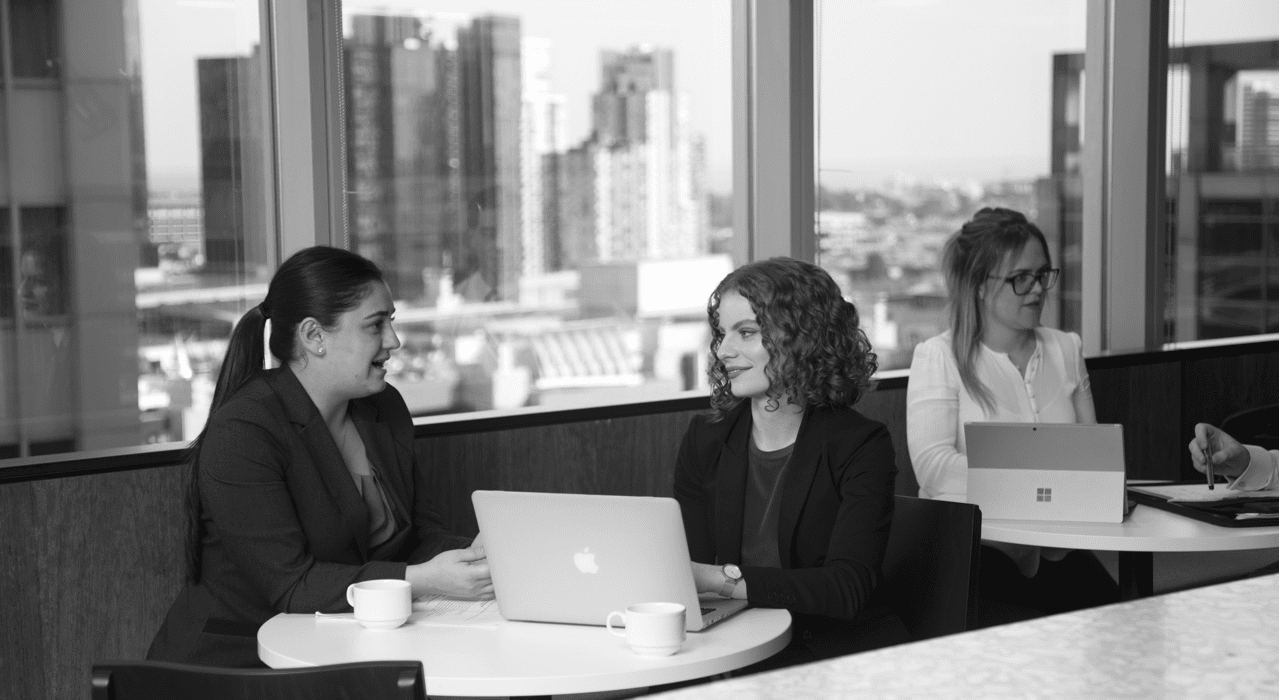After you’ve spent three years with your head buried in law textbooks and endlessly studying for exams, you’re probably keen to graduate and get to work as a lawyer. Yet there are still several significant steps you need to complete first, one of them being Practical Legal Training (PLT). During PLT, you will gain hands-on experience, as well as undertake a placement within a law firm. In this blog, we’ll explore all the particulars regarding the PLT placement and what you can expect when studying your PLT with us.
PLT is compulsory for all law graduates who want to work as legal practitioners in Australia. While a big part of PLT involves being instructed in different topics, at the end of the course all PLT students are able to put this training into real-life context by completing a professional placement within a legal office.
The PLT placement is an exciting opportunity to put all your training into practice and play an active role in real matters and cases. For many PLT students, the professional placement is one of the first times they will get to work in a real-life legal office. Many PLT placements give students a chance to meet with clients, attend court hearings, and draft actual legal documents. In many ways, the PLT placement is a bridge between legal studies and legal practice, and an important step towards your life as a legal practitioner.
There are several different ways that a professional placement can be organised. For those who undertake the face-to-face Practical Legal Training course in Victoria, Leo Cussen can arrange the PLT placement on your behalf, taking into account a Preference Form where you list your preferred law field and organisation type.
The second option is to arrange the placement yourself, which requires you to complete a Placement Arrangement Form which gets approved by Leo Cussen. Trainees who undertake the blended or 100% online versions of the PLT course are required to organise their own placement, but have access to plenty of help and guidance from Leo Cussen’s careers team.
There are many different options for where you can complete your PLT placement, which can include:
– law firms;
– government departments;
– courts or tribunals;
– in-house legal departments;
– community legal centres;
– barristers’ chambers (subject to special conditions);
– other organisations offering legal work experience recognised by Leo Cussen as satisfying the requirements of the PLT.
During the professional placement, the work might include tasks such as:
– attending interviews with clients and conducting interviews in minor matters;
– reviewing documents, including contracts, court documents, agreements, wills etc.;
– observation of, or involvement in, office procedures;
– liaising with internal and/or external clients or stakeholders;
– arranging, preparing for and attending settlements;
– attending conferences, mediations, conciliations, court hearings, or other dispute resolution forums;
– drafting documents of a straightforward nature (eg Transfers, Probate Applications, simple Wills, Affidavits of Documents, etc).
The requirements for who can supervise you during your legal placement are someone who:
– has at least three years of post-admission experience practising law; and
– is admitted to the legal profession; and
– holds a current practising certificate; and
– is currently practising law; and
– and is currently of good standing in the legal profession.
To get the most out of your professional legal placement, you should meet with your supervisor to discuss mutual expectations, such as who will be supervising you and the kind of tasks that will be allocated to you.
Depending on your mode of study, there is usually flexibility to complete the placement at any time during the PLT course, as long as you are able to attend any onsite commitments. In Victoria, PLT placements run for 15 days (full-time equivalent), and all legal trainees must complete a minimum of 105 hours of legal work experience within that period. In Western Australia, PLT placements run for 20 days (full-time equivalent), and all legal trainees must complete a minimum of 140 hours of legal work experience within that period. The recommended daily breakdown is seven hours of work and one hour of lunch per day. In many cases, it is possible to complete the PLT placement part-time if preferred.
At the conclusion of the professional legal placement, an exit interview will be conducted with your supervisor, where you can reflect on the experience and discuss overall feedback. Students will also fill out a Trainee Feedback Form, whilst supervisors will complete a Supervisor Feedback Form.
For any other enquiries about PLT or PLT placements, please contact Leo Cussen to discuss with one of our friendly staff.

